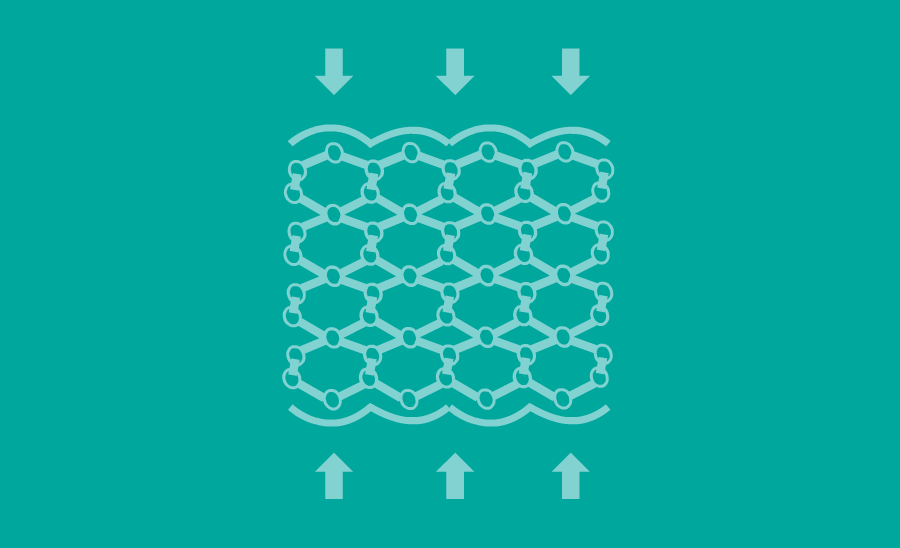
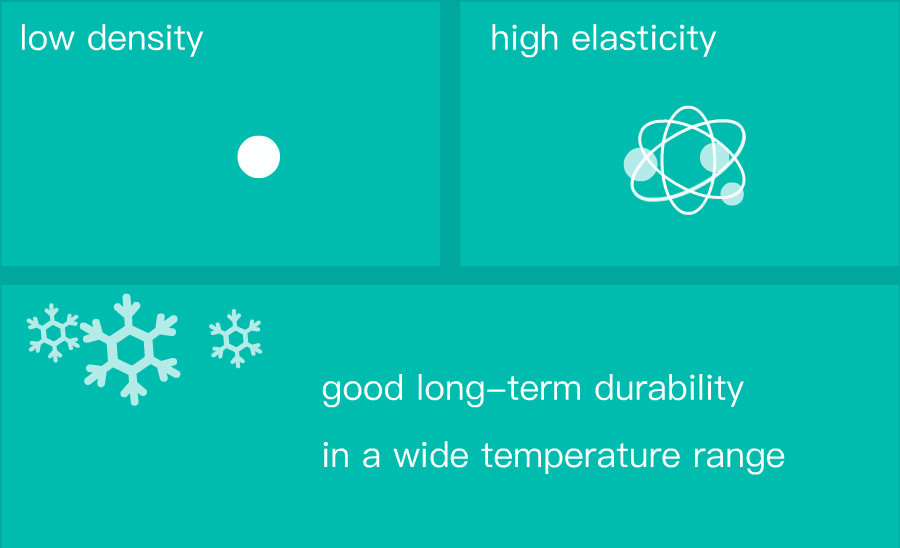
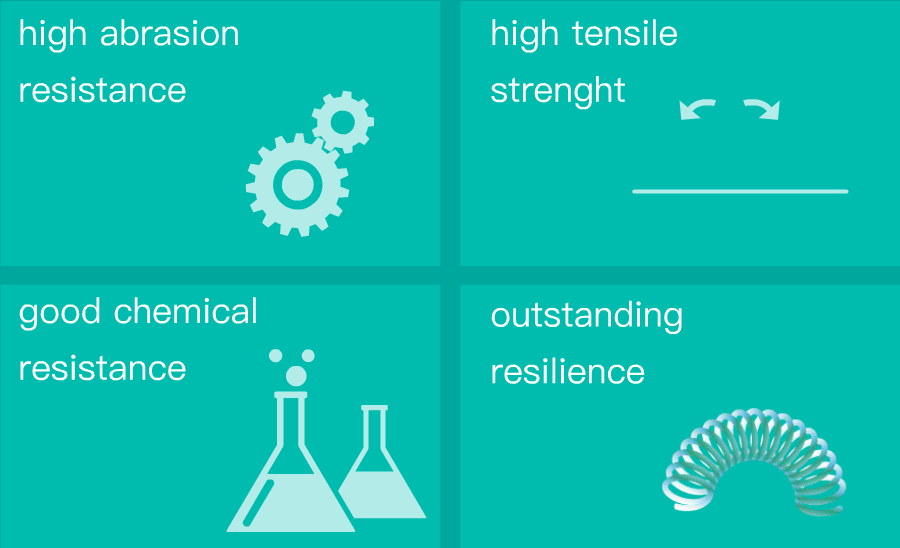
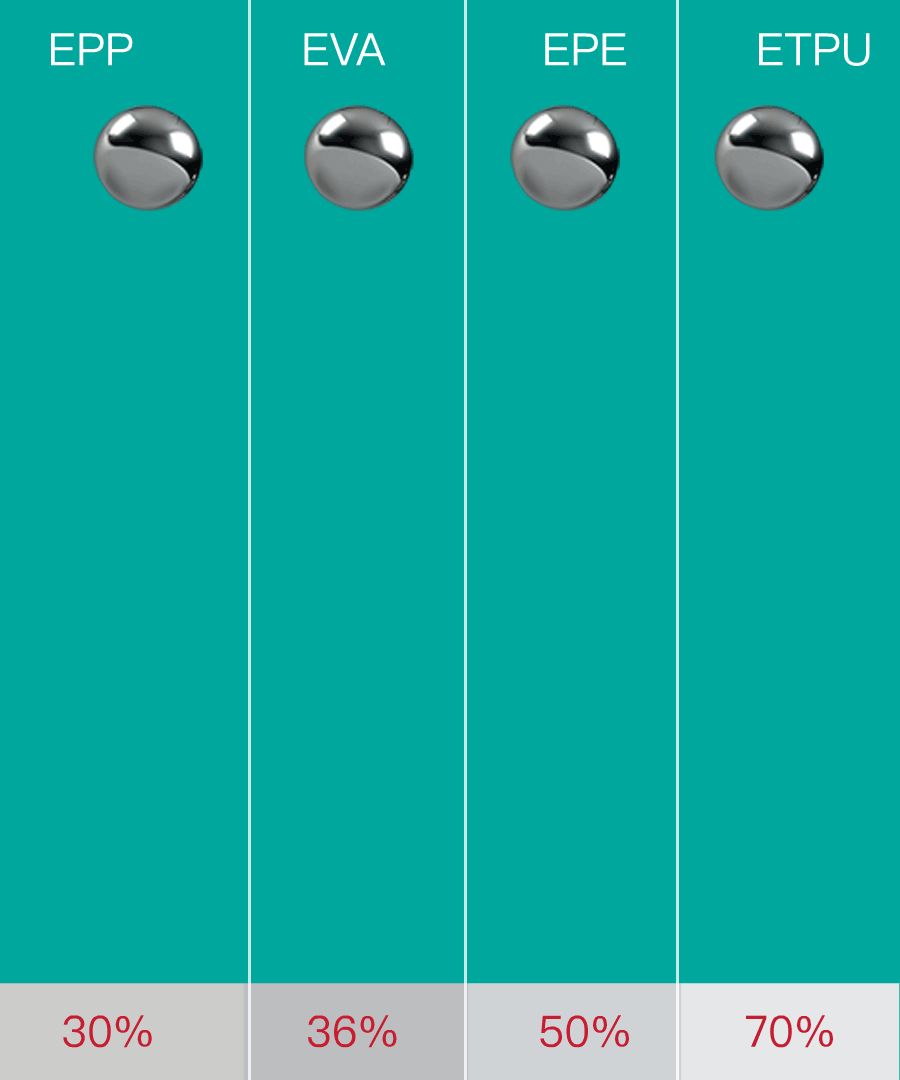


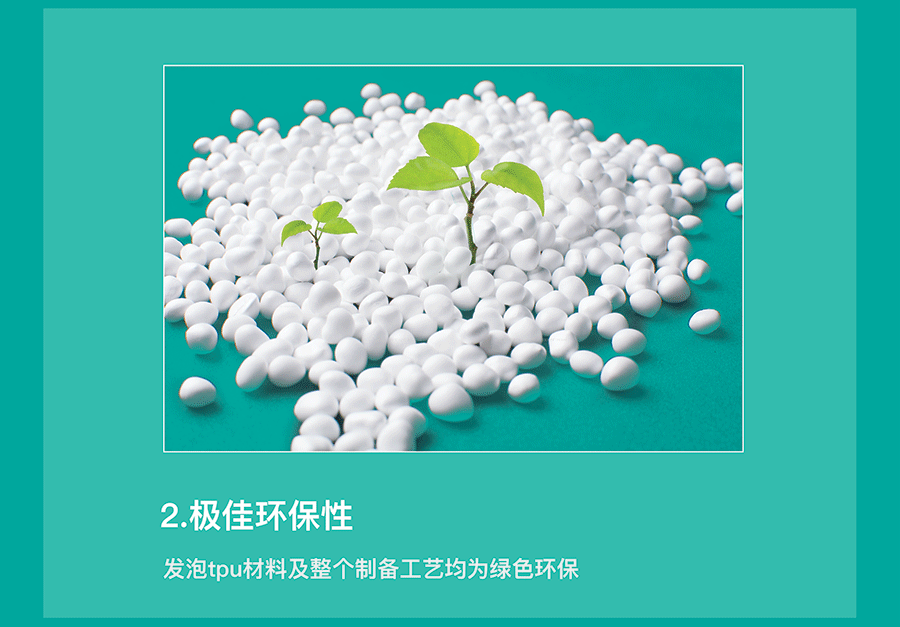
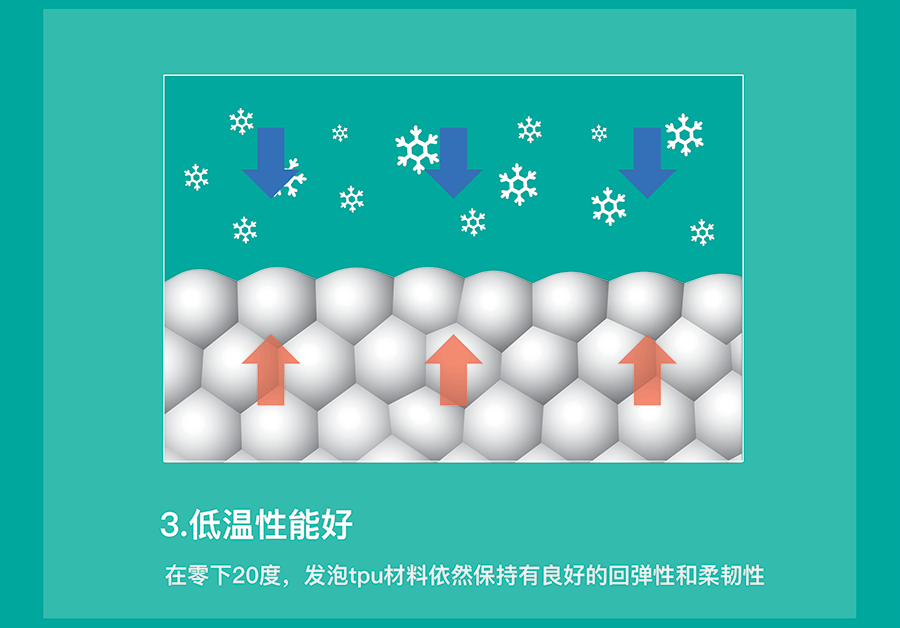
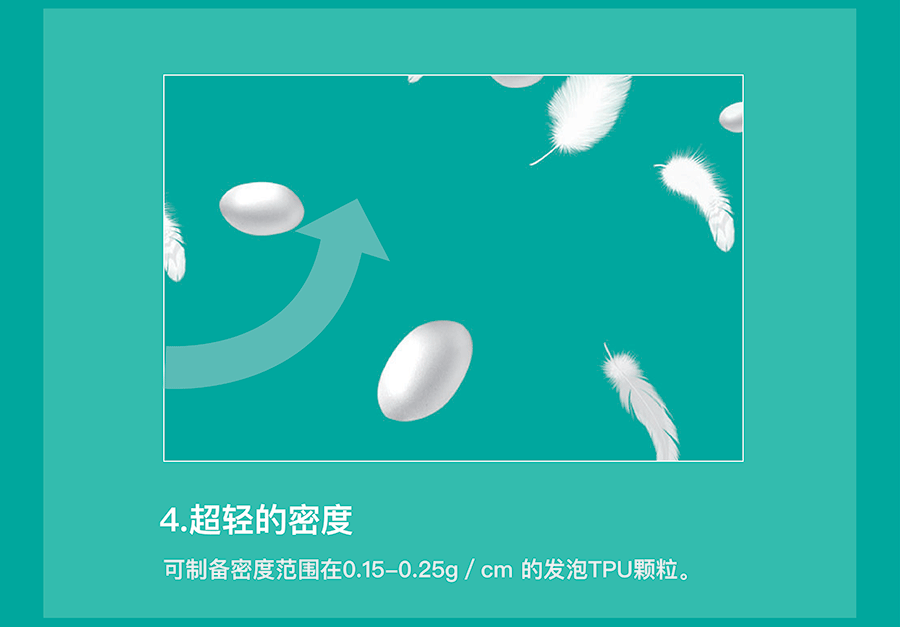
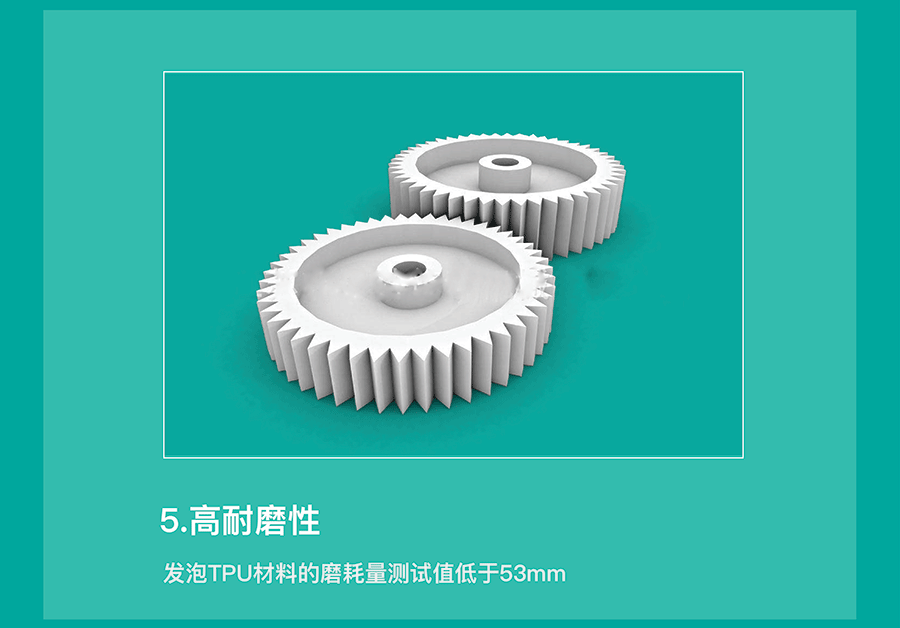
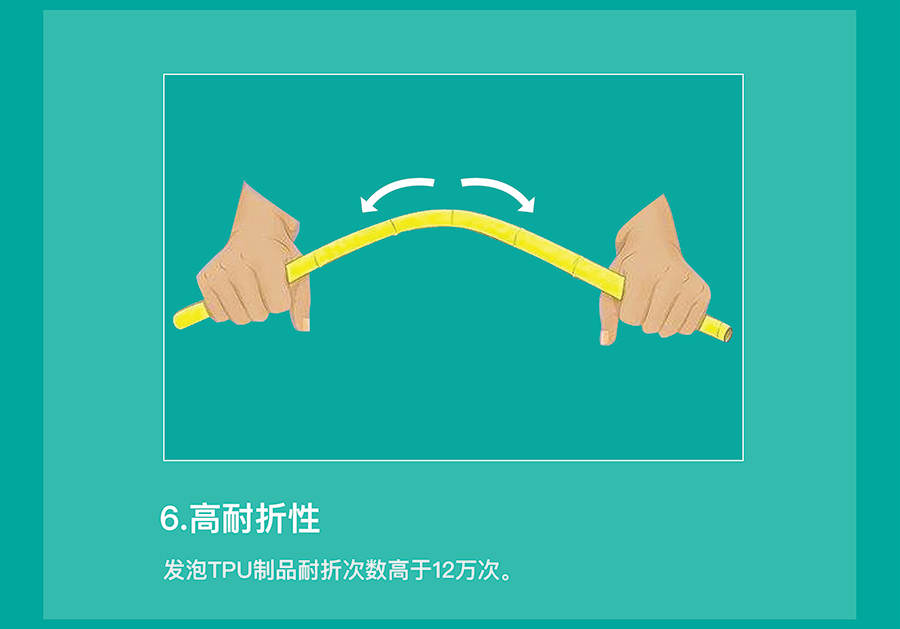
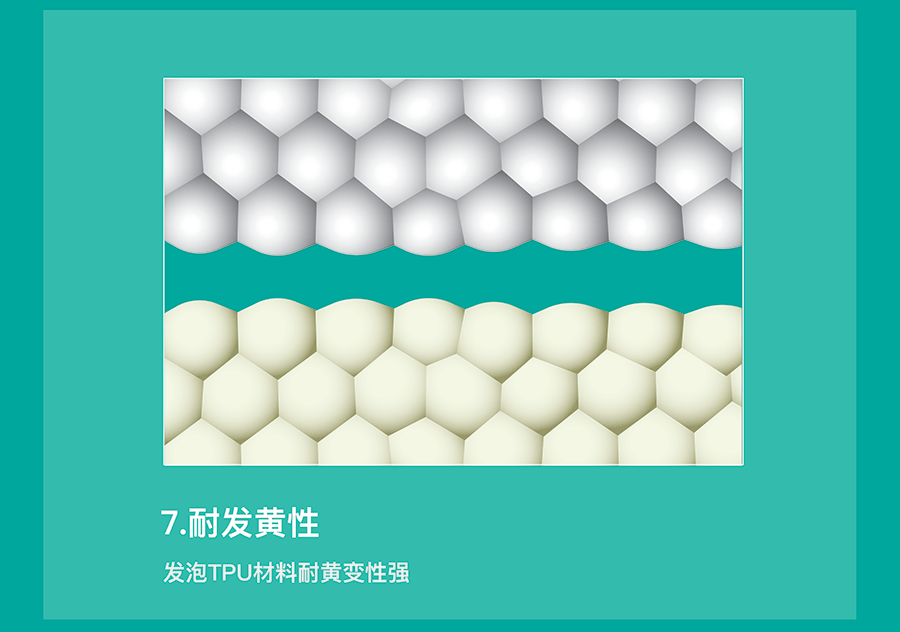
The name of TPU is thermoplastic polyurethane elastomer rubber. It is mainly divided into polyester and polyether types, with a wide hardness range (60HA-85HD), wear resistance, oil resistance, transparency, and good elasticity. It is widely used in daily necessities, sports equipment, toys, decorative materials, and other fields. As a non petroleum mineral derivative, it is completely synthesized by humans, environmentally friendly, and placed in nature. It can degrade completely in 1-3 years or 3-5 years, fully meeting the environmental protection requirements of more and more fields.
A new type of TPU foaming material with high resilience foam particles obtained by restructuring the structure of TPU, called expanded thermoplastic polyurethane (E-TPU) (English name: Expanded thermoplastic polyurethane), is a new type of polymer material assembled by numerous flexible lightweight TPU foaming beads.
As a particle foam, ETPU has a low volume weight, a density of about 110kg/m3, and after processing on a standard molding machine, the weight of molded parts is 200-320kg/m3. This places the new foam between the usually lighter expanded polystyrene (EPS) or polypropylene (EPP) and the heavier elastic polyurethane foam. Due to its closed cell structure, ETPU also absorbs a small amount of water within 24 hours, less than 2% by volume. Like the TPU it is based on, it is also characterized by a very high elongation at break (depending on density between 100 and 150%), tensile strength (about 600 kPa) and wear resistance, as well as good chemical resistance.
One of the main characteristics of ETPU is its excellent recovery behavior, partly due to the closed cell structure of foam. This makes it the most elastic granular foam on the market at present. According to the elasticity tests of ISO 8307 (ball rebound test) and DIN 53512 (using preset pendulum), the rebound height of E-TPU can reach up to about 55%. Therefore, this is significantly higher than other granular foam such as EPS (less than 20%) or EPP (30%). Even under continuous load, E-TPU does not lose its excellent elasticity: in high-frequency fatigue tests using dynamic loads of five cycles per second and constant pressure of 250 kilopascals, the material is about 75% higher than EPE. After 40000 load cycles, the thickness of the E-TPU specimen remained at 37 millimeters (starting figure: 40 millimeters), while the EPE remained permanently compressed and the thickness of the specimen decreased to approximately 9 millimeters. This means that E-TPU can almost recover energy from all applications.
ETPU can be used in any location where customers need to combine lightweight, excellent mechanical performance, and good durability over a wide temperature range, such as sports departments or logistics technology applications. Possible uses include sports field flooring, bicycle inner tubes, and interior decoration. Infinite energy can also replace rubber as a cushioning component in areas that require lightweight materials.












